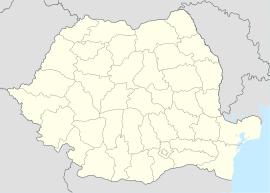Baia | |
|---|---|
 Location in Tulcea County | |
| Coordinates: 44°43′N28°40′E / 44.717°N 28.667°E | |
| Country | Romania |
| County | Tulcea |
| Subdivisions | Baia, Camena, Caugagia, Ceamurlia de Sus, Panduru |
| Government | |
| • Mayor (2020–2024) | Mugurel Marșavela [1] (PSD) |
Area | 198.29 km2 (76.56 sq mi) |
| Elevation | 10 m (30 ft) |
| Population (2021-12-01) [2] | 4,161 |
| • Density | 21/km2 (54/sq mi) |
| Time zone | EET/EEST (UTC+2/+3) |
| Postal code | 827005 |
| Area code | +40 x40 |
| Vehicle reg. | TL |
| Website | www |
Baia is a commune in Tulcea County, Northern Dobruja, Romania.

